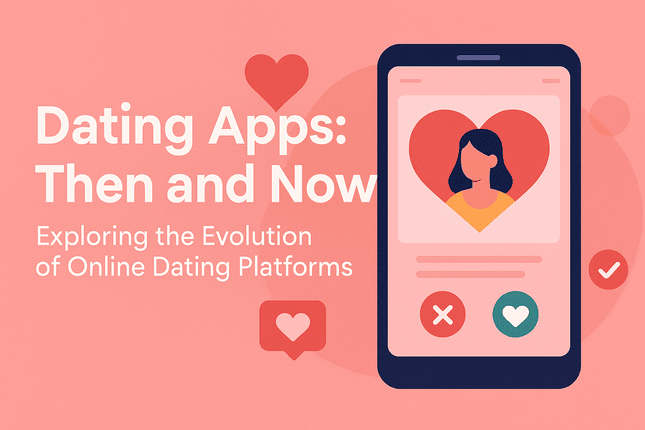Dating has always adapted to culture and technology. From traditional matchmaking to online profiles, we’ve come a long way. In today’s fast-paced digital age, dating apps have transformed how people connect, fall in love, and form relationships. This article explores the journey of dating apps how they began, how they've changed, and where they're heading.
From Matchmaking to Swiping A Journey Through Time
In the early 2000s, online dating websites like Match.com and eHarmony ruled the scene. These platforms were designed for users to create detailed profiles, answer compatibility questionnaires, and wait for algorithm-driven matches. The process was slow and formal but aimed at serious relationships.
Then came the mobile revolution. In 2012, Tinder was launched, changing everything with its simple "swipe" feature. The app reduced dating to a game-like interface, prioritizing photos and instant decisions. This shift revolutionized not just how we date, but how we think about relationships. Suddenly, dating was fast, fun, and always in your pocket.
How Dating Apps Have Changed Over the Years
As the popularity of dating apps grew, so did their complexity and variety. New apps began to emerge catering to different niches and preferences. Bumble gave women control by allowing only them to initiate conversations.Grindr established an area just for people who identify as LGBTQ+. Hinge aimed to “delete itself” by focusing on long-term matches.
Apps now include video pro
From Matchmaking to Swiping A Journey Through Time
In the early 2000s, online dating websites like Match.com and eHarmony ruled the scene. These platforms were designed for users to create detailed profiles, answer compatibility questionnaires, and wait for algorithm-driven matches. The process was slow and formal but aimed at serious relationships.
Then came the mobile revolution. In 2012, Tinder was launched, changing everything with its simple "swipe" feature. The app reduced dating to a game-like interface, prioritizing photos and instant decisions. This shift revolutionized not just how we date, but how we think about relationships. Suddenly, dating was fast, fun, and always in your pocket.
How Dating Apps Have Changed Over the Years
As the popularity of dating apps grew, so did their complexity and variety. New apps began to emerge catering to different niches and preferences. Bumble gave women control by allowing only them to initiate conversations.Grindr established an area just for people who identify as LGBTQ+. Hinge aimed to “delete itself” by focusing on long-term matches.
Apps now include video pro
07:20 AM - Jun 18, 2025 (UTC)

